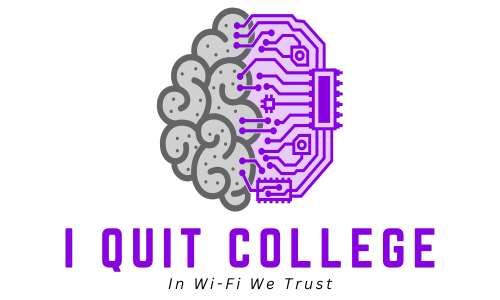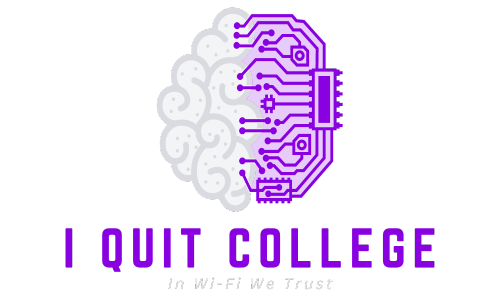Welcome to a new era of entrepreneurship, where businesses are navigating the ever-changing landscape of technology advancements, remote work, sustainability, fintech, AI, and automation. In 2023, the entrepreneurial ecosystem will be shaped by these key trends, presenting both challenges and opportunities for businesses.
The accelerated digital transformation will be at the forefront, fueled by innovations in artificial intelligence, the internet of things, virtual reality, augmented reality, cloud computing, blockchain, and 5G. These technologies will converge, blurring boundaries and creating new possibilities for augmented and remote working, automation, and enhanced decision-making.
Businesses must embrace the power of technology to stay competitive and thrive in this evolving landscape. By harnessing these innovations, companies can unlock improved sales and marketing strategies, enhanced customer service, optimized supply chain efficiency, and streamlined manufacturing processes.
Inflation and supply chain security will also be significant concerns in 2023. Companies need to actively map out their supply chains, identify and mitigate risks, and explore alternative suppliers and self-reliance strategies to ensure stability and resilience.
Sustainability will continue to gain importance, demanding that companies prioritize environmental, social, and governance (ESG) processes. Transparency, measuring impact, and developing clear action plans to reduce negative impacts throughout the supply chain will be crucial for businesses to demonstrate their commitment to sustainability.
Creating an immersive customer experience will be a priority for entrepreneurs in 2023. Technology will play a key role in crafting interactive and personalized experiences that resonate with customers. To remain competitive, businesses must also focus on improving the overall employee experience, recognizing its impact on customer satisfaction.
The talent challenge will persist, with businesses needing to provide attractive careers, flexibility, and opportunities for growth to attract and retain top talent. Reskilling and upskilling will be essential, with a focus on both technical skills and uniquely human skills such as creativity, critical thinking, and communication.
Staying informed about the latest business and tech trends will be crucial for success in 2023. As the entrepreneurial landscape evolves, entrepreneurs and business leaders must stay ahead of the curve to seize opportunities and navigate the challenges that lie ahead.
Key Takeaways:
- Accelerated digital transformation will reshape businesses, enabling augmented and remote work, automation, and improved decision-making.
- Inflation and supply chain security are key concerns, requiring companies to map out supply chains and explore alternative suppliers.
- Sustainability will be a focal point, with companies needing to prioritize ESG processes and reduce negative impacts throughout their supply chains.
- An immersive customer experience and a strong employee experience are vital for business success and competitiveness.
- Businesses must address the talent challenge by providing attractive careers, flexibility, and opportunities for growth while upskilling their workforce.
Accelerated Digital Transformation
In 2023, digital transformation will continue to accelerate, driven by advancements in technologies such as artificial intelligence (AI), internet of things (IoT), virtual reality (VR), augmented reality (AR), cloud computing, blockchain, and 5G. These technologies will converge and blur boundaries, enabling new solutions for augmented and remote working, automation, and improved decision-making.
Businesses must ensure they embed the right technology throughout their processes and operations to take advantage of benefits such as improved sales and marketing, better customer service, efficient supply chains, aligned products and services, and streamlined manufacturing processes. The goal is to create “intelligent enterprises” where systems and processes support each other to complete tasks in the most efficient way possible.
Key Elements of Accelerated Digital Transformation
- Artificial Intelligence (AI): AI technologies enable machines to simulate human intelligence, enabling automation, predictive analytics, and personalized customer experiences.
- Internet of Things (IoT): IoT connects various devices and systems, allowing them to gather and share data, optimize processes, and improve efficiency.
- Virtual Reality (VR) and Augmented Reality (AR): VR and AR technologies create immersive experiences, enhancing training, product visualization, and customer engagement.
- Cloud Computing: Cloud-based services provide scalable computing power, storage, and applications, allowing businesses to access resources on-demand and reduce infrastructure costs.
- Blockchain: Blockchain technology ensures secure and transparent transactions, enabling trusted digital interactions and reducing the need for intermediaries.
- 5G: 5G networks offer higher data transfer speeds, lower latency, and increased network capacity, enabling faster and more reliable connectivity for IoT devices, remote work, and real-time communication.
By leveraging these technologies, businesses can optimize their operations, automate repetitive tasks, enhance decision-making processes, and deliver innovative products and services to meet the evolving needs of customers.
Accelerated digital transformation opens up new possibilities for businesses, enabling them to embrace innovation, achieve operational excellence, and stay ahead in the digital age.
Inflation and Supply Chain Security
As businesses enter 2023, they will continue to face challenges related to inflation and supply chain security. Inflation, combined with rising interest rates, has the potential to cool the economy and make borrowing more expensive, impacting both business investments and customer spending.
To mitigate the risks associated with volatile market pricing, companies need to explore alternative suppliers and develop self-reliance strategies. By diversifying their supplier base and reducing reliance on a single source, businesses can minimize the impact of price fluctuations and ensure a stable supply of essential goods and services.
Making supply chain security a priority is crucial in navigating the uncertainties of the current market. Mapping out supply chains allows businesses to identify potential risks, such as shortages or logistics issues, and develop contingency plans to address them. Additionally, increasing logistical costs necessitate a careful evaluation of the entire supply chain to identify areas where efficiency can be improved.
Some companies have taken a proactive approach to supply chain security by in-sourcing parts of their manufacturing processes. This strategy reduces risk and reliance on specific regions that may be prone to shutdowns and disruptions.
By focusing on inflation management and supply chain security, businesses can navigate the challenges of an evolving market and maintain stability in their operations.
Sustainability
The importance of sustainability continues to grow in 2023, driven by heightened awareness of the climate crisis and the preferences of conscious consumers. Companies are increasingly recognizing the need to prioritize environmental, social, and governance (ESG) processes and integrate them into their core strategies.
This involves conducting comprehensive assessments to measure the environmental and social impacts of their operations, while promoting transparency, reporting, and accountability in their interactions with stakeholders. By taking a holistic approach, businesses can identify opportunities to reduce negative impacts at every stage of the supply chain, from sourcing raw materials to final product delivery.
Creating a clear plan with specific goals and timeframes is essential for achieving sustainability objectives. This plan should encompass strategies for minimizing carbon emissions, optimizing resource usage, promoting fair labor practices, and fostering social inclusivity. Furthermore, businesses must critically assess the ESG credentials of their suppliers to ensure collaboration with organizations that share similar values and sustainability commitments.
| Key Actions for Sustainability in 2023 |
|---|
| 1. Integrate ESG processes into the core business strategy |
| 2. Measure and reduce environmental and social impacts throughout the supply chain |
| 3. Enhance transparency, reporting, and accountability |
| 4. Set clear sustainability goals and timeframes |
| 5. Assess the ESG credentials of suppliers and partners |
To achieve meaningful sustainability goals, businesses must consider the environmental impact beyond their own company walls. For example, they need to evaluate the ecological consequences of partnering with cloud service providers and operating data centers.
Implementing sustainable practices not only helps mitigate the detrimental effects of climate change but also enhances brand reputation, attracts conscientious consumers, and contributes to a positive societal impact. By taking proactive steps towards sustainability, companies can align their business objectives with the urgent need to combat climate change and create a better future for all.
Immersive Customer Experience
In 2023, creating an immersive customer experience will be a top priority for businesses. To stay competitive in the evolving entrepreneurial ecosystem, brands will need to focus on immersion and interactivity, harnessing the power of technology to engage and captivate their customers.
Social media will continue to play a significant role in connecting businesses with their target audience. While social media spending is expected to increase, small businesses can build an audience and brand awareness through a multichannel organic approach, leveraging the power of different platforms and strategies.
One technology that will revolutionize the customer experience is the metaverse, which encompasses virtual reality (VR) and augmented reality (AR). These technologies will allow businesses to create immersive experiences for their customers, both online and offline. Whether it’s through virtual product demonstrations or interactive in-store displays, the metaverse will enable brands to engage their customers in new and exciting ways.
Brands are recognizing the importance of customer experience and are appointing chief experience officers (CXO) to ensure that customer-centricity is embedded in their business strategies. A customer-centric approach will drive customer satisfaction, loyalty, and advocacy, ultimately contributing to business growth and success.
While customer experience is crucial, employee experience is equally important. To attract and retain top talent, businesses need to create value-oriented workplaces that offer fulfilling work and opportunities for growth. By prioritizing employee experience, businesses can build a strong and motivated workforce that is committed to delivering exceptional customer experiences.
Employee Experience: The Key to Attracting and Retaining Talent
Employee experience encompasses every aspect of an employee’s journey within an organization, from recruitment and onboarding to ongoing development and career progression. A positive employee experience fosters employee engagement, satisfaction, and productivity, leading to lower turnover rates and higher performance.
Businesses can enhance employee experience by providing a supportive work environment, embracing a flexible work culture, and offering opportunities for personal and professional growth. By investing in training and development programs, businesses can equip their employees with the skills necessary to thrive in a rapidly evolving business landscape.
Remember, in the age of immersive customer experiences, it’s the combination of exceptional customer experience and employee experience that sets businesses apart from their competitors.
| Benefits of Immersive Customer Experience | Benefits of Employee Experience |
|---|---|
| Increased customer satisfaction and loyalty | Higher employee engagement and satisfaction |
| Improved brand perception and reputation | Reduced turnover rates and increased retention |
| Enhanced customer advocacy and word-of-mouth marketing | Increased productivity and performance |
| Opportunities for personalized and interactive experiences | Greater alignment with company values and mission |
Creating an immersive customer experience and prioritizing employee experience are essential strategies for businesses in 2023. By leveraging technology, embracing a customer-centric approach, and fostering a value-oriented workplace, businesses can thrive in the evolving entrepreneurial landscape.
The Talent Challenge
In 2023, businesses will continue to face the talent challenge, requiring them to attract and retain top talent in a competitive job market. To successfully navigate this challenge, companies must provide attractive career opportunities, flexibility, and an enticing work environment and company culture.
The flexibility of hybrid work and a focus on work-life balance and well-being will be essential in attracting and retaining talent in 2023.
As technology continues to shape the workforce, reskilling and upskilling will be crucial for businesses. The rapid advancement of technology is augmenting jobs, making it imperative for employees to develop new skills. In particular, technology skills such as data science, artificial intelligence (AI), and other tech-related skills will be in high demand.
While technology skills are essential, uniquely human skills will also be highly valued in 2023. These skills include creativity, critical thinking, interpersonal communication, leadership, and compassion. Companies that prioritize the development of both technology and human skills will have a significant advantage in attracting and retaining top talent.
Businesses need to address the skills gap through training and recruitment strategies, ensuring their workforce is equipped for the future.
Reskilling and upskilling programs should be implemented to provide employees with the necessary training to adapt to changing technologies and job requirements. Additionally, optimizing recruitment strategies to identify and attract individuals with the desired skill sets is crucial.
Creating a work environment that fosters continuous learning, growth, and collaboration will also be key in attracting and retaining talent. Companies should prioritize mentorship programs, knowledge sharing platforms, and inclusive work cultures to support the development of their workforce.
Benefits of Addressing the Talent Challenge:
- Access to a highly skilled and adaptable workforce
- Enhanced innovation and problem-solving capabilities
- Improved employee engagement and retention
- Increased productivity and efficiency
- Positive impact on company culture and reputation
Talent Challenge Table:
| Challenge | Solution |
|---|---|
| Lack of technology skills | Implement reskilling and upskilling programs |
| Shortage of uniquely human skills | Emphasize the development of creativity, critical thinking, and leadership skills |
| Attracting top talent | Offer attractive career opportunities, flexible work arrangements, and an enticing company culture |
| Retaining top talent | Create a work environment that fosters continuous learning, growth, and collaboration |
Small Business Finance Trends
Small businesses are expected to face finance challenges in 2023, with traditional loans not always being a viable option. However, there are alternative sources of capital that can play a pivotal role in filling unmet funding needs.
One such alternative is alternative lenders, who offer financing options with more flexible terms and requirements compared to traditional banks. These lenders focus on the financial health and potential of the business rather than just credit scores. By exploring these alternative lenders, small businesses have a higher chance of securing the funding they need to grow and thrive.
Investors can also provide an alternative source of capital for small businesses. Whether it’s angel investors or venture capitalists, these individuals or firms are keen on supporting innovative business ideas and have the financial resources to provide the necessary funding. Small businesses can pitch their ideas and demonstrate their growth potential, attracting the interest of these investors and securing the necessary capital.
Grants are another avenue to explore. There are numerous grants available through government agencies, non-profit organizations, and private foundations that provide funding for specific industries, projects, or initiatives. Small businesses can research and apply for grants relevant to their field to obtain the financial support they need.
In the era of fintech, technology has revolutionized the way small businesses access capital. Fintech platforms offer online lending solutions, crowd-sourced funding, and peer-to-peer lending opportunities. These platforms connect small businesses with willing lenders or investors, facilitating the financial transactions and bypassing the traditional banking system.
Table: Alternative Sources of Capital for Small Businesses
| Source | Description |
|---|---|
| Alternative Lenders | Lenders that provide financing options with more flexible terms and requirements compared to traditional banks. |
| Investors | Individuals or firms who provide funding to small businesses in exchange for ownership or a share of the profits. |
| Grants | Funding provided by government agencies, non-profit organizations, or private foundations for specific industries, projects, or initiatives. |
| Fintech Platforms | Online platforms that offer lending solutions, crowd-sourced funding, and peer-to-peer lending opportunities through technology. |
Rising interest rates can pose challenges for small businesses seeking financing. These higher rates can cool the economy, making borrowing more expensive for businesses and customers alike. It’s essential for small businesses to carefully assess the impact of rising interest rates on their cash flow and financial stability. They may need to adjust their financial plans, explore alternative funding sources, or consider delaying certain investments until rates become more favorable.
In summary, small businesses in 2023 may face finance challenges, but alternative sources of capital can help bridge the funding gap. Exploring options such as alternative lenders, investors, grants, and fintech platforms can provide the necessary financial support. Additionally, small businesses should carefully consider the impact of rising interest rates on their financial plans and make informed decisions to ensure long-term success.
Conclusion
In 2023, successful businesses must be adaptable and responsive to the key trends shaping modern entrepreneurship. Accelerated digital transformation, fueled by advancements in technologies such as artificial intelligence, internet of things, and blockchain, will continue to blur boundaries and create opportunities for augmented and remote working, automation, and improved decision-making.
Inflation and supply chain security pose significant challenges for businesses, requiring proactive mapping of supply chains, mitigation of risks, and exploration of alternative suppliers and self-reliance strategies. Sustainability will be a top priority, with companies needing to prioritize environmental, social, and governance processes, increase transparency, and develop clear action plans to reduce negative impacts throughout the supply chain.
To remain competitive, businesses must create immersive customer experiences, leveraging technologies such as virtual reality and augmented reality to deliver personalized interactions. Additionally, the talent challenge persists, necessitating attractive careers, flexibility, and investment in reskilling and upskilling employees in both technical and uniquely human skills.
Small businesses will face finance challenges, driving the need for alternative sources of capital and raising awareness of unmet funding needs. Ultimately, embracing these trends and leveraging technology will be key to achieving business success in the ever-evolving entrepreneurial ecosystem of 2023.
FAQ
What are the key trends shaping modern entrepreneurship in 2023?
The key trends shaping modern entrepreneurship in 2023 include accelerated digital transformation, inflation and supply chain security, sustainability, immersive customer experience, the talent challenge, small business finance trends, and the importance of technology.
How will accelerated digital transformation impact businesses?
Accelerated digital transformation will blur boundaries between technologies such as artificial intelligence, internet of things, virtual reality, augmented reality, cloud computing, blockchain, and 5G. This will create opportunities for augmented and remote working, automation, and improved decision-making.
What should businesses do to stay competitive during accelerated digital transformation?
Businesses should embed the right technology throughout their processes and operations to take advantage of benefits such as improved sales and marketing, better customer service, efficient supply chains, aligned products and services, and streamlined manufacturing processes.
What challenges will businesses face in terms of inflation and supply chain security?
Businesses will face ongoing inflation and supply chain challenges in 2023. Inflation, coupled with rising interest rates, can impact business investments and customer spending. To mitigate risks, companies need to map out their supply chains, explore alternative suppliers, and develop self-reliance strategies.
How can businesses prioritize sustainability in 2023?
To prioritize sustainability in 2023, businesses need to integrate environmental, social, and governance (ESG) processes into their strategies. They should measure their impact, increase transparency, and develop action plans to reduce negative impacts throughout their supply chains.
What is the importance of immersive customer experience for businesses?
Immersive customer experience will be a top priority in 2023. Brands need to leverage technology, including the metaverse, virtual reality, and augmented reality, to create interactive and personalized experiences for their customers both online and offline.
How can businesses attract and retain talent in 2023?
Businesses need to provide attractive careers, flexibility, and a value-oriented work environment to attract and retain talent in 2023. Reskilling and upskilling employees with both technical and uniquely human skills will also be crucial.
What are the finance trends for small businesses in 2023?
Small businesses may face finance challenges in 2023, with loans not always being an option. Alternative sources of funding, such as alternative lenders, investors, grants, fintech, venture capital, angel investors, peer-to-peer lending, and crowdfunding, will play a pivotal role in filling unmet funding needs.
How can businesses ensure success in the evolving entrepreneurial ecosystem?
Businesses can ensure success in the evolving entrepreneurial ecosystem by staying informed about the latest business and tech trends, adapting to the key trends shaping modern entrepreneurship, and being proactive in their approach to embrace technological advancements.






